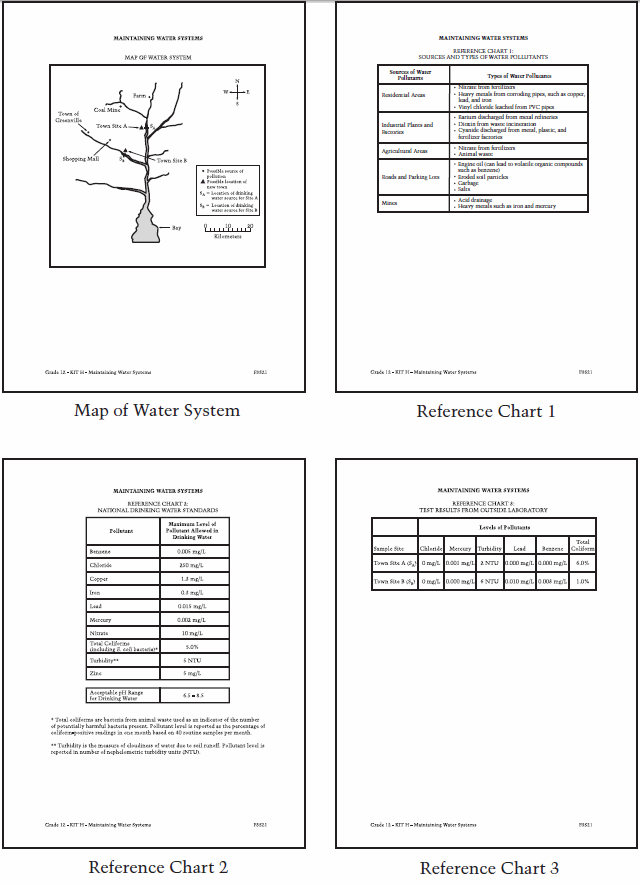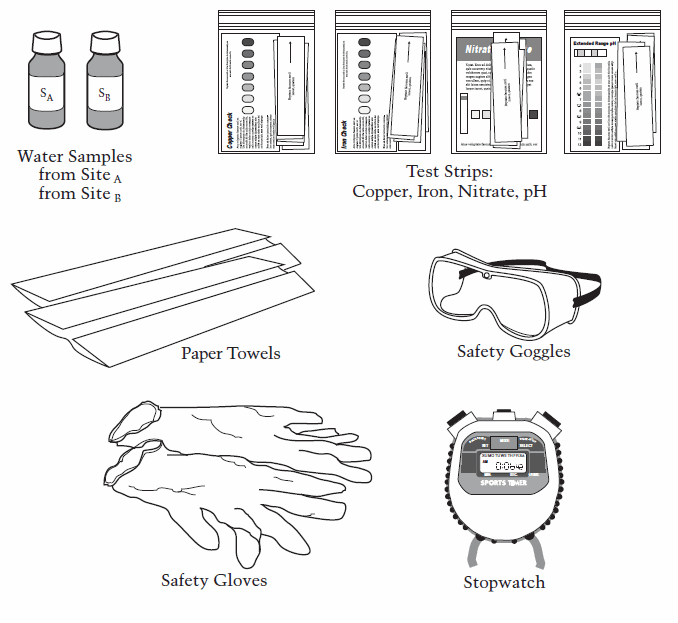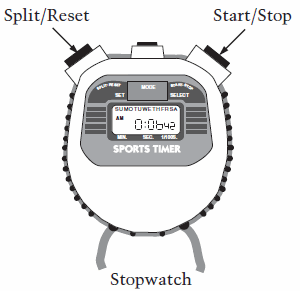MAINTAINING WATER SYSTEMS
For this task, you received a kit that contains materials you will use to perform your investigation in the next 40 minutes. Please open your kit now, take all of the things out of the bag, and put them on your desk.
Do not taste or smell the water samples.
Use the diagrams on the following two pages to check that all of the materials in the diagrams are included in your kit. If any materials are missing, raise your hand and the administrator will provide you with the materials that you need.
Diagram 1

Diagram 2

Diagram 3

- To start the watch, push the START/STOP button.
- To stop the watch, push the START/STOP button again.
- The time between the first and second pushes will show on the display. For example, the watch above reads 6.42 sec.
- To reset the watch to zero, push the SPLIT/RESET button.
- Always push the buttons in this sequence: START/STOP, START/STOP, SPLIT/RESET.
- If at any time you need help or cannot reset the watch to zero, raise your hand, and the administrator will help you.
DO NOT USE THE MATERIALS OR READ ANY FURTHER UNTIL THE ADMINISTRATOR TELLS YOU TO DO SO.
You have been asked to provide a report on which of two sites is the better location for a new town.
In this task, you will conduct your own investigation to determine which site is better. You will need to decide between the two sites based on the quality of water available from a nearby river. You will also describe which water treatment processes will be needed at this site.
This task contains the following three parts:
Part 1: Making a Prediction
Part 2: Testing Water Samples
Part 3: Selecting a Site for a New Town
You will be scored on how well you
- evaluate reference materials,
- collect data,
- use your data to determine which of two sites is the better location for a new town, and
- provide information about water treatment processes.
Your kit includes reference materials that you will use in your investigation.
- The map in your kit shows a water system made up of streams, rivers, and a bay. The map also shows the locations of a town, a shopping mall, a farm, and a coal mine. Each of these may potentially result in pollution of the water system.
- Reference Chart 1 lists potential sources of water pollution and the types of pollutants from these sources.
- Reference Chart 2 provides national drinking water standards and lists the maximum levels allowed for a number of pollutants.
- Reference Chart 3 provides test results from an outside laboratory.
- Four test kits with test strips, instructions, and color reference charts are provided for conducting and interpreting the results of each test.
Follow the directions on each page and write your answers to the questions in the spaces provided in your booklet.